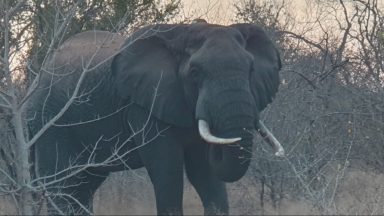In Zambia’s Simalaha Community Conservancy, Gordon Homer, Peace Parks’ Project Manager for Kavango Zambezi Transfrontier Conservation Area, comes across a few large buffalo bulls enjoying the salt lick. In 2018, a founding population of disease-free Cape Buffalo were translocated from Namibia’s Waterberg Plateau National Park and introduced into a large buffalo sanctuary in Simalaha.
Ian Middleton, Simalaha’s Project Manager, has been hard at work ensuring that these buffalo are well-looked after. He has done so by installing a nifty invention called the Duncan Applicator, which you can learn more about here, as well as ensuring that the buffalo have access to water all-year-round. This has been done with the help of Doug Evans, owner of Simalaha Horse Safaris, who has installed a pipeline that pumps water from a water source in a nearby village, Kasaya, to the buffalo sanctuary.
With an estimated population of around 400 disease-free buffalo, Simalaha is now able to start selling a few each year to game reserves within Zambia which will help to generate revenue and contribute to making Simalaha financially sustainable. Having a ‘disease-free’ status is extremely valuable when buying and selling buffalo as most of these notoriously ill-tempered mammals are infected with foot-and-mouth disease. Although it does not result in severe illness in buffalo, it is easily transmitted to other cloven-hoofed animals such as cattle, which can be fatal to livestock and threaten livelihoods.
By being one of the iconic ‘Big 5’, buffalo not only play an important role in the tourism economy of conservation areas, but are important for the healthy functioning of the ecosystem. When walking, their sharp hooves dig into the soil, helping rainwater penetrate deeper and aerating the soil. This promotes better conditions for grasses and plants to grow.
Having buffalo in Simalaha is invaluable, and the Peace Parks team makes sure that they are always looked after. By implementing sustainable and renewable energy to power this water-system, both the buffalo and the Earth are kept happy, helping to restore the natural heritage of the land and its people.


